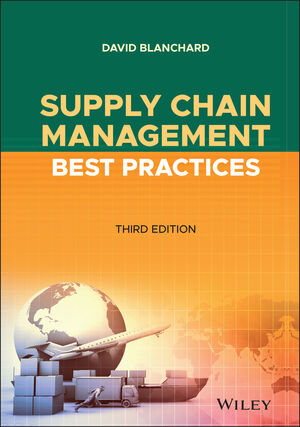Intelligent Networking and Supply Chain Management: An Interview With John Brandt

 Whether your company makes car parts, blenders or chocolate-chip cookies, today’s global supply chains pose numerous risks to manufacturers. Catastrophes like the 2011 Fukushima nuclear disaster can suddenly cut off supplies. Arcane regulations covering conflict minerals or hazardous chemicals can blindside unwitting purchasing managers. And, of course, there are plain old, run-of-the-mill quality problems to contend with. Worse, thanks to 20 years of emphasis on lean manufacturing, manufacturers have little or no inventory to buffer the slings and arrows of outrageous fortune.
Whether your company makes car parts, blenders or chocolate-chip cookies, today’s global supply chains pose numerous risks to manufacturers. Catastrophes like the 2011 Fukushima nuclear disaster can suddenly cut off supplies. Arcane regulations covering conflict minerals or hazardous chemicals can blindside unwitting purchasing managers. And, of course, there are plain old, run-of-the-mill quality problems to contend with. Worse, thanks to 20 years of emphasis on lean manufacturing, manufacturers have little or no inventory to buffer the slings and arrows of outrageous fortune.
Fortunately, advances in software, communications and networking technology have made it easier than ever to get up-to-the-minute information on the status of raw materials, parts and finished products.
Perry A. Trunick, editor in chief of World Trade 100, recently sat down to talk supply chain management with John R. Brandt, CEO and founder of The MPI Group. Brandt has devoted more than two decades to studying leadership in effective, purpose-driven organizations. An expert on how companies can adapt themselves to the realities of new markets, new corporate structures and new customer expectations, Brandt is an accomplished management innovator and an internationally recognized expert on manufacturing and technology.
Before founding The MPI Group in 2003, Brandt followed a unique career path, combining two decades of experience in marketing, management, consulting and journalism. As publisher and editor-in-chief of IndustryWeek magazine, Brandt led the development of several pioneering research efforts, including the IW Value Chain Survey, the World-Class Communities Project, the IndustryWeek 1000, the World’s Best Managed Companies Program, and the IW Census of Manufacturers.
WT100: How does the lack of visibility along an extended supply chain impact manufacturing?
Brandt: Manufacturers are increasingly held accountable by customers and regulatory agencies for the quality of their entire supply chains. Failure to monitor all the way back upstream puts companies at risk of losing customers or worse.
WT100: What steps can companies take to improve supply chain communications and visibility?
Brandt: Begin by identifying precisely who makes what all along the supply chain that rolls into a product. You also want to know the regulations and customer specifications tied to each component, material or ingredient. The challenge of this basic first step is illustrated in the huge number of prominent manufacturers that have been unable or unwilling to report meaningful information for conflict minerals requirements.
WT100: What are some of the practical results you see in supply chains with strong communications?
Brandt: There is certainly an ability to limit liabilities and warranties if you can identify supply-chain problems early on. But improvements extend well beyond that. For example, if you can see in real time that a supplier shipment is going to be late or flawed, you have an opportunity to secure supplies from a different vendor, reschedule operations to produce different products until the correct material arrives, or warn the end-customer of potential delay. In other words, good communications ensures that problems do not grow exponentially in the supply chain.
WT100: Can you quantify some of the results of better communications—a more networked approach—in those supply chains where you see it today?
Brandt: Improved on-time delivery rates to customers, improved quality to customers, reduced warranty and scrap costs, improved customer retention rates, etc.
WT100: How would you describe the risk to a supply chain that is not “networked” for communications and visibility?
Brandt: First, if a customer has a choice between a manufacturer that knows what its supply base is doing in real time all the time vs. one that is clueless—which one do you think will get the business? And second, although government regulations may not currently be asking a given manufacturer to monitor components or ingredients, they soon will be regardless of industry. It’s best to be ready.
Want to hear more from John Brandt on networking and supply chain management? Join us online on June 24, at 2 p.m. Eastern time, to hear Brandt present the webinar, “Intelligent Networking Drives Manufacturing Supply Chain Performance.” A joint presentation of ASSEMBLY magazine and World Trade 100, this free, 1-hour webinar will show you how to use intelligent networking to avoid unnecessary risks and disruptions and respond to rapid changes in supply chain conditions.
Looking for a reprint of this article?
From high-res PDFs to custom plaques, order your copy today!








